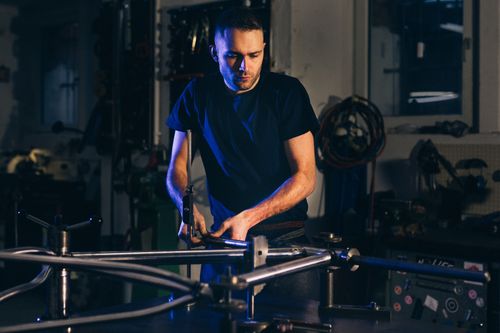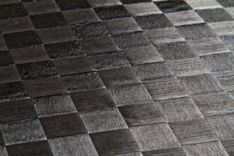Niccolò Bonanno is known for being one of the best frame builders. His heritage? Italian passion. Amore Infinito and the più belle biciclette del mondo. Apparently the cycling industry rumours he might be the most beautiful frame builder Italy has to offer. But we will leave that for you to judge.
His base? Berlin. And you can see that in his craft. His bikes are handmade from steel. The paintjobs are flashy and will surely catch your eye, but are at the same time classy and objects of pure beauty. The sizes the bikes come in? Each bike is handmade and tailored to it’s owner. If you buy a Bonanno you will get the perfect bike for your physiological needs and as well fine tuned to the style of adventures you will take your beautiful custom bike onto.
Niccolò is building 50 to 60 frames per year, by hand. I guess it is rare to find someone who would know better how to find the right bike and what to look out for when getting a new bike. Along the way you will learn about a lot of considerations for the frame builder as well as for you as a cyclist yourself when choosing your next dream bike.
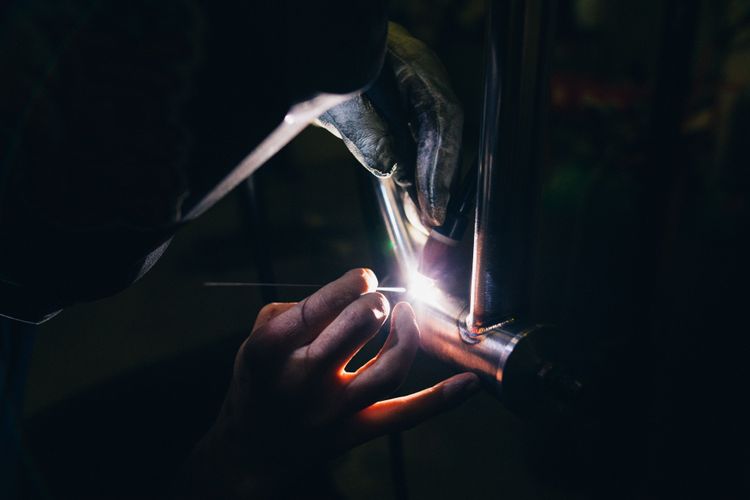
Nico, obviously you choose steel for your bikes as the material of choice. Why is steel still the material of choice for so many cyclists and especially for high class frame builders like you? Is it only nostalgic feelings towards the culture and roots of cycling or is there more to it?
I do steel and stainless steel frames. I was always interested in metals and well I started TIG welding. It’s probably the most simple way of building a frame. And of course then I continued learning more and more techniques and got drawn into the beauty of building metal based frames.
And hey: Steel isn’t what it used to be 40 years ago. Companies like Columbus push the development massively. Steel tubes are becoming thinner and (believe me) hightech! Highend Steelbikes are possible and will not leave you with disadvantages compared to other materials.
I will also build aluminium frames in the future. Aluminium is a super interesting material and you can get even a bit lighter then with steel.
Why did I shy away from carbon? Carbon is not adaptable to the individual shape of a customer and it’s easily breakable. Apart from that it’s a thread to our environment and not easily recyclable. Well and of course it’s not easy to repair carbon materials. Metalls are just more durable and environmentally friendly in general.
In the world of pro cycling of course carbon is the material of choice but a consumer doesn’t need a carbon bike. Our market is dictated by performance while the majority of customers are not racing or performing at a performance level where a carbon frame makes a difference. And I don’t mean this in a bad way. If you want to go on nice rides and enjoy them without having a physio loosening your tense muscles afterwards your needs are way different from the pro’s needs.
Sustainability is a huge topic for us as well and makes it close to impossible for us to work with carbon. We barely trash anything and we barely put any burden on the environment. Of course all our bikes and parts are repairable.

Ok, ok. A passionate topic for you! We are talking about a lot of materials here: Carbon, titanium, steel, aluminium, and more. There are so many materials to choose from when buying a new bike. Is there one material that is best? How can you decide between materials for your frame if you are unsure?
No! Of course there is no one material… well, ok for me it’s steel. I just know what quality of bike I can build with my favourite material. I am biased as you see.
Honestly the choice of material depends on what a customer wants to do with it. Do you live in a hilly or montainous landscape or in the flats? Is it a comfortable travel bike or a racing machine? You need to decide on these things first and get a clear mind to make a decision. Your fancy carbon aero race bike will not be the best choice on hors category climbs or on rough tarmac.
And then you know: Highend material can still be manufactured to form a bad bike while cheap material can produce a very decent bike.
Rather than looking for material go look at geometries, on the quality of manufacturing and of course: The components on the bike! A carbon bike and a steel bike on the same price range might have quite a difference in the groupset and components that are used on the bike.
It’s about what you use it for, it’s specific geometry and the quality of the build. Not about the material itself.
If you are unsure or just getting into bikes consult frame builders like us or go to a good quality bike shop. That’s something the internet can not offer for you. (Yet.)

Picture from 2015.
How important is weight for a bike? We often speak of carbon being the most premium material and being the lightest. Is that true and what should we take into consideration apart from weight?
Of course weight makes a huge difference.
Well, not for a beginner, but as soon as your training is on a very high level or you live in the mountains, 2-3kg more or less will make a hell of a difference. In Berlin weight doesn’t matter that much though. However, a dentist bike will not increase your performance on it’s own. To feel and use the difference of a lighter and probably more highclass bike you need to have some experience.
On the other hand too less weight in a frame can actually have negative effects on the handling of your bike.
I do build very light bikes and I have a hard time selling a heavy bike. However: What is the border? What is heavy and what is light? Think about that as well.
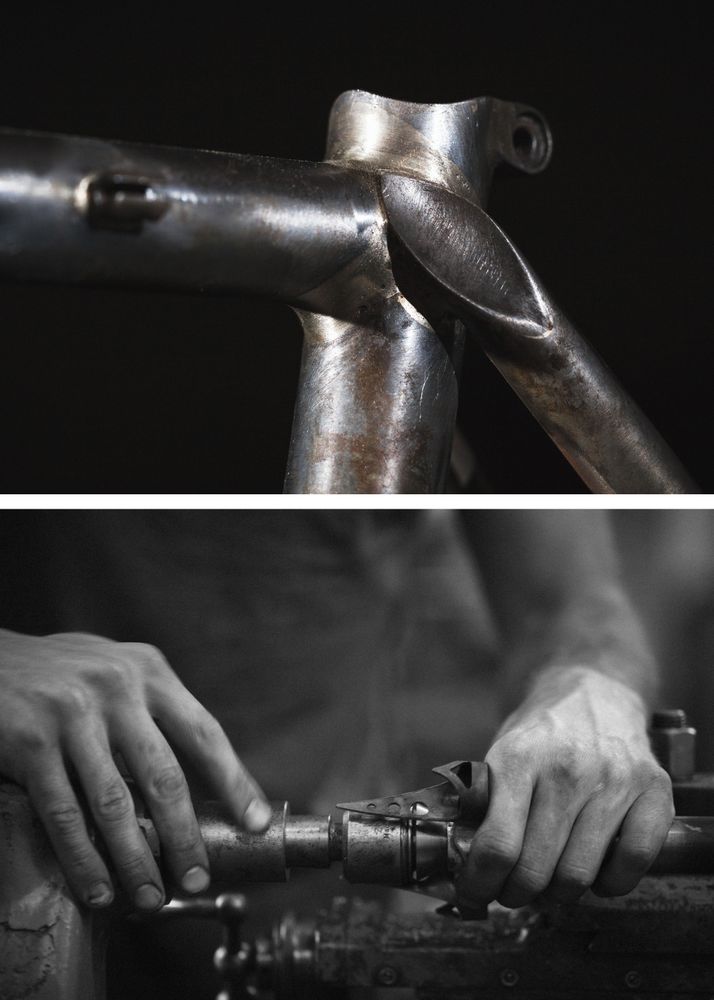
Picture from 2015.
Ok we got the material, but how do I choose the right size of frame? Most brands sell sizes similar to clothing. But is that the right way? How do I measure which size of frame I need?
Again I am biased: I do build custom bikes and this is the most ideal situation. You are coming to my shop, we will measure you, talk what you want to do and we build it. Perfect for your body.
That being said of course a lot of people will fit very well on a stock sized bike. So of course you can offer stock sizes and it doesn’t have to be a bad thing to have stock sizes.
On the other hand this can be very tricky for brands because you should offer every size then. From 48cm to 68cm. And as you can guess: That is confusing as most brands offer sizes XS to XL and then this might be a bit different in the actual fit which means you need to carefully read how they designed their sizing.
In short: 80% of people will be happy with a stock sized frame. 20% will only find true happiness with a custom built frame. Well and of course you will only have a truly clean bike without any spacers etc. with a custom frame.
What body measurements do you need to define the right frame size? You should start with your inseam length and your upper body as well as your arm length. With those measurements you can already say a lot!
From there on you will need a lot of experience and also you need to know a lot about the rider type of the rider.
The basic data an online bike brand require from you (inseam and body height) are a good start but will not give you the full picture and accurate results. Let’s make it short: Go and have a good old BIKEFIT!
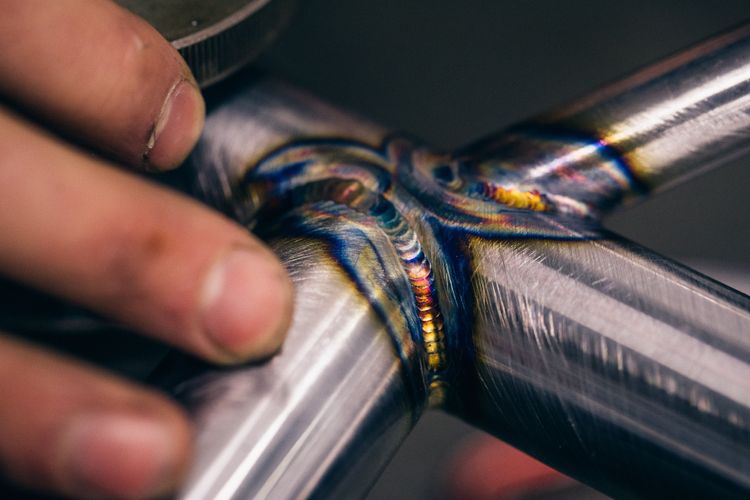
Why is it so important to have the right size of frame? Does it matter if my frame is one size too big or too small?
You can correct a lot by choosing fitting Seatposts, Stems, Spacers and more, but your bike will look exactly like you think it would. Like someone tinkered a lot to somehow make it work. And of course there is limits to this. At some point if your bike is too small or too big you will get less efficient and well eventually you will not be able to use that bike properly anymore. (e.g. if you can’t reach the ground as the top tube is too high.
I can only say it again: go to a bikefitter!
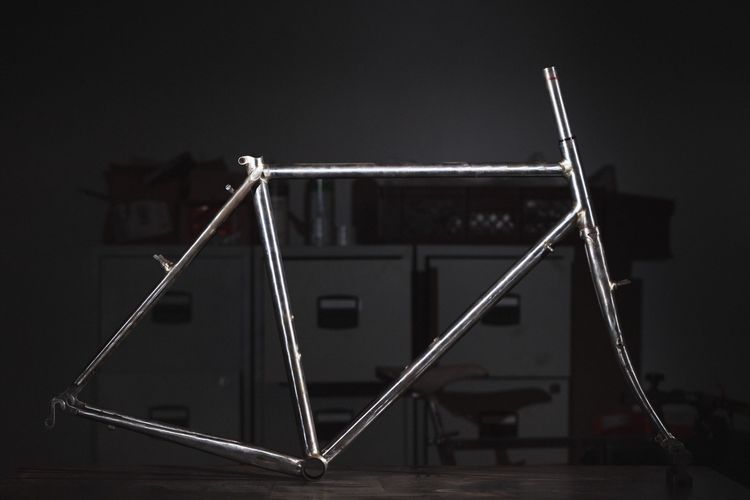
What other measurements of your bike are important and how can they make or break your experience while riding a bike?
All measurements are important! From your body weight over foot size to your body elasticity.
This is a science and even I have to learn a lot here. I work closely with bikefitters and their work is extremely important!
And sometimes the best fitters work out of a small garage in italy.
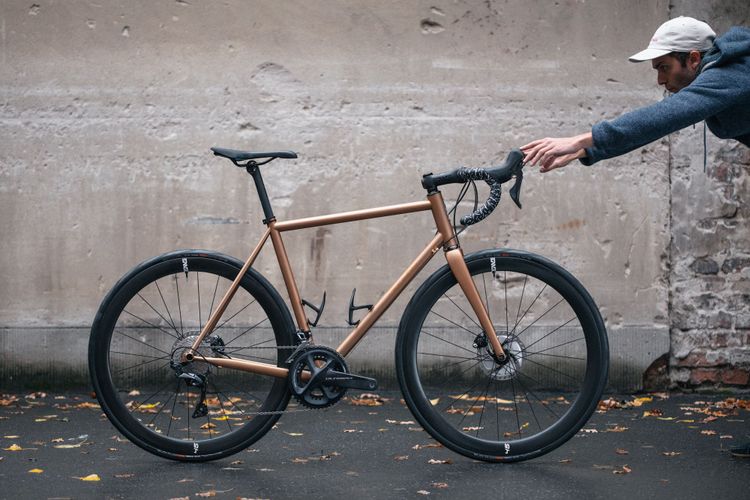
The gravel bikes are here and right now we discover a real hype. People want to go off-road but still want to ride fast even on tarmac. Is there a bike that can do it all? Or do you still need to have different bikes for different purposes?
No. Definitely not. There is no one-does-it-all bike. The right tool for the right job. There is no way around it. Even gravel has its limits. The idea that a gravel bike also conquers single trails is a little too romantic. For the beginner, of course, this is a different topic. They can already do a lot with a comfortable bike.
Right now we see a lot of new bikes coming out that seemingly don’t have any cables anymore. They are routed internally. Interestingly on your Futomaki Disc 2 Frame you are routing the brake cables internally while the gear cables are routed outside. Why is that? Is it not always a good idea to have cables routed internally?
In this case it was a mechanical group that was installed. I like it when you see a few cables. I prefer the semi-integrated variant.
On gravel bikes there is of course much more vibration and then the cables can rattle. So I would never route everything inside.
Mechanical group sets which are routed internally never shift as well as an externally routed. Internally routed is also quite difficult to build and maintain. This can then also be expensive when you need a service although you only need to quickly replace a few bearings.
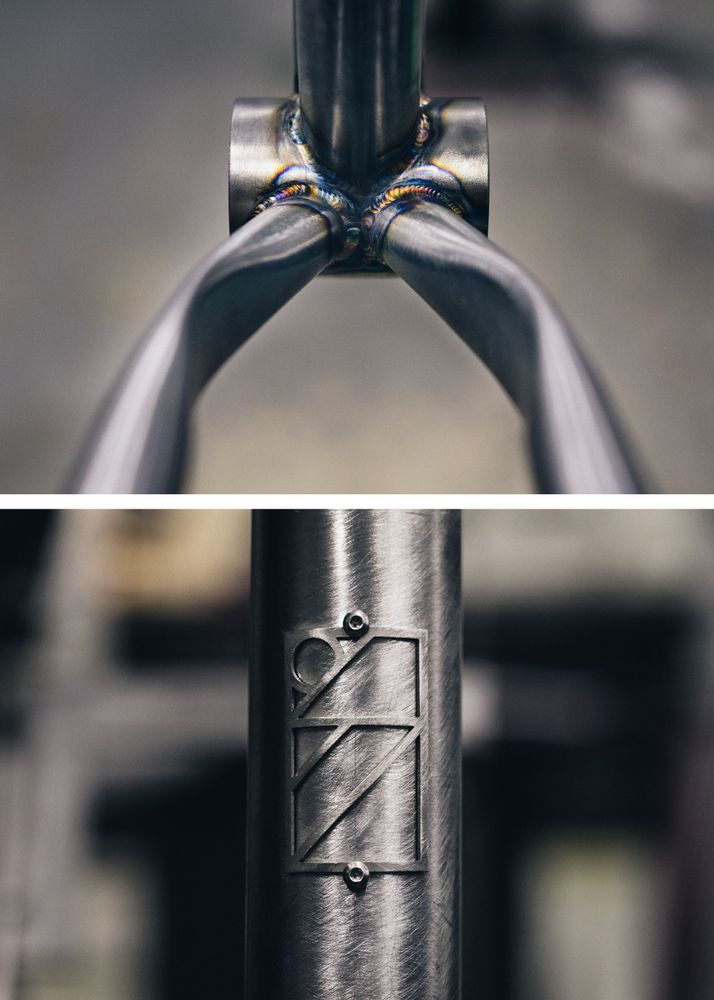
Disc Brakes or Rim Brakes? Why would you choose one over the other?
It depends what kind of bike it is. For a gravel I would always choose discs. For roadbikes it’s a different story. There it depends what kind of weather and terrain you ride. For flat, sunny rides rim brakes are awesome and even mor lightweight then their disc counterparts. In the mountains it’s a different story.
Disc brakes are definitely a progression that makes sense and yes they have their place on the market.
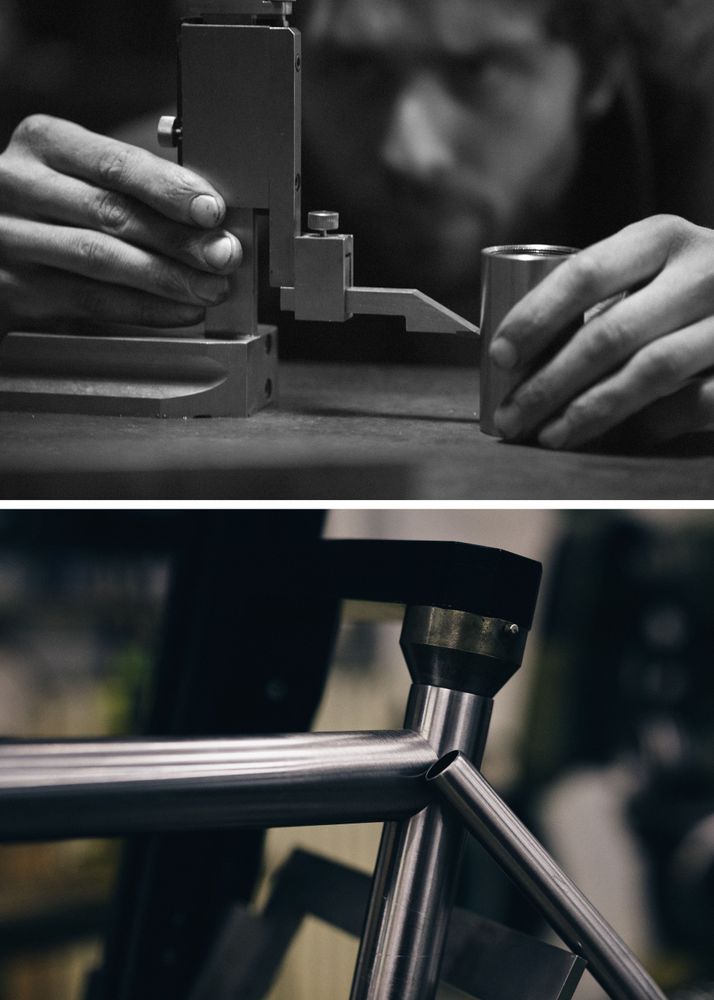
Mechanical or electronic shifting? Does it even matter? And also 1x or classical front derailleur?
Again it’s both! For advances riders electric shifting makes a lot of sense. On gravel… well, if you are lazy in maintenance you should think of a mechanic groupset. They are super easy to service.
And for the Chainrings? Also both. On road I would prefer a front derailleur and 2 chainrings. Same applies for long distance. Having a broader variety of gears can really make a difference when you get fatigued.
For CX and short rides a single chainring drivetrain setup is king. Less stuff on the bike. Less stuff that can get broken.

Last but not least: We get it: You are biased. However handbuilt custom frame or stock bike? Why get a handbuilt one?
Of course it has to be a handbuilt frame. Let alone as you will learn sooo much about your bike during the process until we finish it and you will not get that when you just buy a bike.
You will go through a lot with the frame builder. And obviously very small and very tall people are at home at our workshop. We can provide bikes that are clean of spacers and other obstructions. Uniquely designed for you.
It’s ok to buy stock. Don’t get me wrong. But once you had a custom bike from us you will not get back to stock.
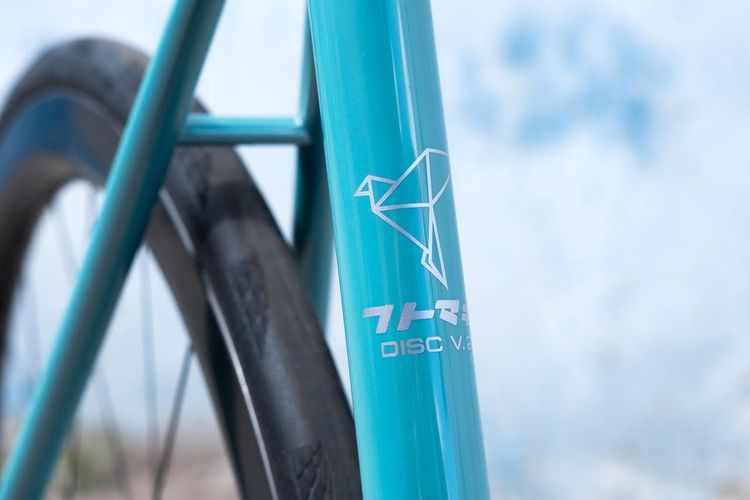
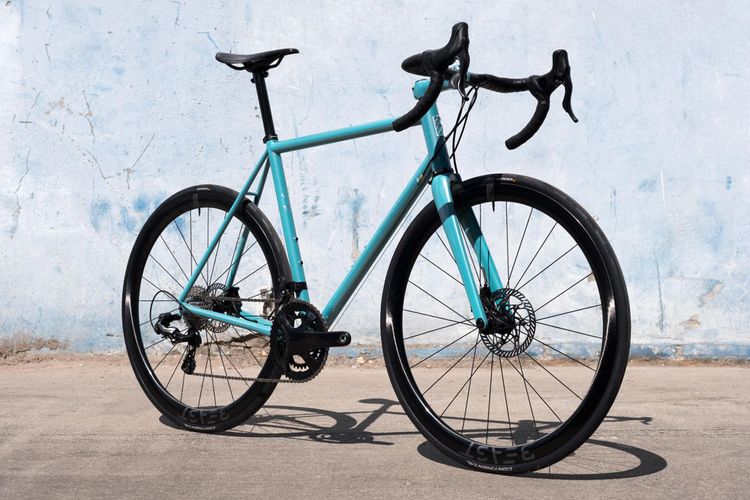
Enough of the questions! Thank you so much for this expert input Nico. Frame building is a beautiful craft and Bonanno sure is one of the most prestigious names in the industry. We hope that this guide helps you to get a starting point on how to choose your next bike. And well if you want to make sure… Hit up Nico and you will get a beautiful bike, created specifically for you. Of course a handmade frame will in most cases have a higher price tag then mass produced ones, however you will probably have your unique made bike for the rest of your life. Whatever your next bike will be: Make sure to enjoy it.

